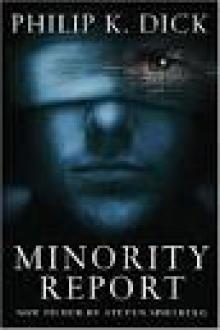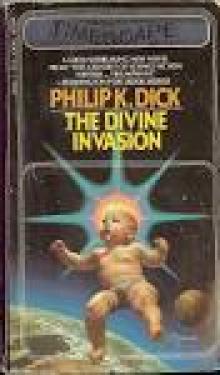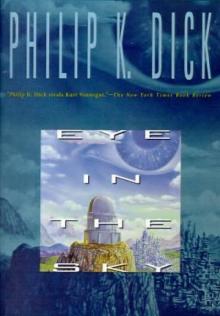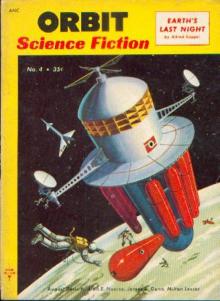- Home
- Philip K. Dick
The Shifting Realities of Philip K. Dick Page 2
The Shifting Realities of Philip K. Dick Read online
Page 2
Throughout Dick’s speculations, there is the underlying sense of a dark pain and of shattering experiences that had left him grappling for his place in the shared world (koinos kosmos, in the Greek of Heraclitus, a thinker whom Dick greatly admired) and struggling to evade the madness of solitary delusion (idios kosmos, private world; from idios comes the English “idiot”—one who is cut off from that which is happening around him). Though fear lurked strongly within him, Dick insisted on staring madness in the face and asking if it, too, could lay claim to a kind of knowledge. Thus, in “Drugs, Hallucinations, and the Quest for Reality,” a 1964 essay included herein, Dick argued that what is called schizophrenic or psychotic “hallucination” may be, in many cases, the result of extremely broad and sensitive perceptions that most “sane” persons learn to screen out of their consciousness. The Kantian a priori categories of space and time are examples of such screens; Kant claimed that these were necessary for the mental ordering of phenomenal reality, which would otherwise remain a hopeless perceptual chaos to human minds. In his essay, Dick theorized that, to the extent that our mental and sensory awareness happens to extend beyond these socially ratified screens, any one of us may become subject to “hallucinations”—which are, in essence, unshared realities. While it is possible that “mystical” insights may ensue, there is a greater likelihood—and a fearfully tragic one it is—that we may find ourselves in a hell realm of utter mental isolation:
In the light of this, the idea of hallucinating takes on a very different character; hallucinations, whether induced by psychosis, hypnosis, drugs, toxins, etc., may be merely quantitatively different from what we see, not qualitatively so. In other words, too much is emanating from the neurological apparatus of the organism, over and beyond the structural, organizing necessity…. No-name entities or aspects begin to appear, and since the person does not know what they are—that is, what they’re called or what they mean—he cannot communicate with other persons about them. This breakdown of verbal communication is the fatal index that somewhere along the line the person is experiencing reality in a way too altered to fit into his own prior worldview and too radical to allow empathic linkage with other persons.
There is an interesting parallel between Dick’s emphasis here on a societally based definition of hallucinations—as perceptions unshared by others—and the insight offered by the eminent anthropologist Edward T. Hall in his Beyond Culture: “Perceptual aberrations are not restricted to psychoses but can also be situational in character, particularly in instances of great stress, excitation, or drug influences.”2 Instances, that is, in which, in Dick’s words, “too much is emanating from the neurological apparatus of the organism.”
In his 1965 essay “Schizophrenia and the Book of Changes” (also included), Dick sought to give the fearful and isolated perceptions of the schizophrenic an analytical coherence that might extend beyond the purely personal to a new viewpoint on human experience:
What distinguishes schizophrenic existence from that which the rest of us like to imagine we enjoy is the element of time. The schizophrenic is having it all now, whether he wants it or not; the whole can of film has descended on him, whereas we watch it progress frame by frame. So for him, causality does not exist. Instead, the a-causal connective principle which [quantum physicist] Wolfgang Pauli called Syncronicity is operating in all situations—not merely as one factor at work, as with us. Like a person under LSD, the schizophrenic is engulfed in an endless now. It’s not too much fun.
Dick described himself, in this essay, as “schizoid effective”—a “pre-schizophrenic personality.” This fearful dancing on the high wire of self-diagnostics is a recurrent element in Dick’s essays and journals. Two opposite possibilities set the boundaries: the fear that he might be insane (“psychotic” and “schizophrenic” were his most common terms), and the possibility that he might, through an encompassing intellectual understanding (anamnesis, the recollection of the archetypal realm of Ideas of Plato), win spiritual redemption—freedom from his crippling fears, and a haven from the deluded and sorrowful world.
There was, for Dick, a certain sense in which his own writings might alleviate some of the sorrow—for his readers and for himself—by at least openly acknowledging the doubts and questions that existence posed for those who had eyes to see. As he wrote in one Exegesis entry:
I am a fictionalizing philosopher, not a novelist; my novel & story-writing ability is employed as a means to formulate my perception. The core of my writing is not art but truth. Thus what I tell is the truth, yet I can do nothing to alleviate it, either by deed or explanation. Yet this seems somehow to help a certain kind of sensitive troubled person, for whom I speak. I think I understand the common ingredient in those whom my writing helps: they cannot or will not blunt their own intimations about the irrational, mysterious nature of reality, &, for them, my corpus of writing is one long ratiocination regarding this inexplicable reality, an integration & presentation, analysis & response & personal history.3
One aspect of that “personal history” that has continued to intrigue his readers is the bizarre and powerful series of dreams, visions, and voices that flooded Dick’s consciousness in February and March 1974 (or “2-3-74,” Dick’s shorthand for that period) and stood for him as the central—and, ultimately, inexplicable—event of his life. These inspired what has become known as the “Valis Trilogy”—the final three novels of Dick’s life that have earned both critical praise and a broad readership (through their recent simultaneous reissuance as Vintage trade editions): Valis (1981), The Divine Invasion (1981), and The Transmigration of Timothy Archer (1982). In all three novels, Dick explores the anguish and entropic emptiness of an earthly realm in which God (or whatever alternative name we give to the divine) remains unknown and perhaps unknowable. But also, in all of these works, Dick offers the hope that divine knowledge and redemption may yet be granted—even to modern, scuffling souls who have trouble paying their rent and keeping their marriages together. There is a striking thematic resemblance between these novels and the speculations of the Gnostic thinkers of the early centuries of the Christian era. Indeed, in the definitive modern edition of Gnostic scriptures, The Nag Hammadi Library (1988), an “Afterword” singles out Dick (along with Jung, Hermann Hesse, and Harold Bloom) as a preeminent modern interpreter of Gnostic beliefs.
As we have seen, even prior to the “Valis Trilogy,” philosophical and spiritual questions had formed the underpinnings of Dick’s SF “alternate” worlds and “alien” intelligences. But Dick had harbored a carefully limited view of himself, through the first two decades of his writing career, as one who fervently posed ultimate questions but lacked—as a matter of personal experience—any real encounter with a higher source of being. After 2-3-74, this changed to an extent. By his very nature, Dick was not a man to arrive at—or even to wish to arrive at—a simple conclusion about any life event, much less as complex and unsettling a series of events as 2-3-74. But through all of his wrangling, one fundamental fact emerges plainly: 2-3-74 served as a soul-shaking inspiration for Dick as a writer and thinker. The pratfalls and paradoxes of his SF plots had begun to seem to him—after two decades of prolific exploration—mere entertainments. Not that Dick did not wish to entertain. On the contrary, it was one of his paramount concerns as a writer: He loved the excitement of a good SF plot, as is amply testified to in his essays on SF included in this volume. But one of the strongest facets of his character—and one that sets Dick aside from the abundance of writers who dabble in metaphysical puzzles out of sheer amusement—was his conviction that answers could be attained by those who persisted in asking questions. Imagination, intelligence, and yearning insistence could prevail. Now, in his final years, there was a new passion: the driving necessity of getting to the truth of what had happened to him in those months.
Was “2-3-74” a case of genuine mystical experiences, or a contact with “higher” (or simply “other”) forms of intelligence, or a conscious ma
nipulation of his mind by unknown persons, or a purely private outbreak of psychotic symptoms? Dick considered each of these possibilities, as well as others too numerous to summarize here, in his eight-thousand-page Exegesis (subtitled by Dick Apologia pro Mea Vita, to emphasize its central importance). The Exegesis was a journal—handwritten, for the most part—at which Dick labored night after night for eight years, until his death in 1982, in an attempt to explain 2-3-74 to his own satisfaction. He never succeeded. The Exegesis is, at times, a wild and wayward human record: Eight years’ worth of impassioned journaling through the dead of the night (Dick’s preferred time for creative effort), with no expressed intention of publication in his own lifetime, could not but result in highly uneven streaks of writing. But the Exegesis is also replete with passages that confirm Dick’s standing as a subtle thinker and an astonishing guide to hidden possibilities of existence. A previous collection, In Pursuit of Valis: Selections from the Exegesis (Underwood/Miller, 1991), edited by the present writer, has won critical praise for Dick as a philosophical and spiritual thinker. Robert Anton Wilson (coauthor of the popular Illuminatus trilogy) wrote: “Dick explains ‘mystic’ states better than any visionary writer of the past.” In Gnosis, reviewer John Shirley declared: “Deluded or spiritually liberated, Dick was a genius, and that genius shines through every page of this book.” Further unpublished selections of the Exegesis appear in this volume—including a full-length essay, titled (in the parodic pulp style that Dick employed with masterly effect in his fictional works) “The Ultra Hidden (Cryptic) Doctrine: The Secret Meaning of the Great Systems of Theosophy of the World, Openly Revealed for the First Time.”
As is exemplified by this flamboyant title, there is something in the nature of Dick’s raptly pell-mell style that may well put off those readers who think they know what “serious” writing must look and sound like. Of course, it was just such fixed canons of “serious” discourse that Dick devoted himself to dismantling—or, in the more fashionable postmodern jargon that has come into prominence since his death, “deconstructing”—in many of the essays included in this book.
Dick is, as a matter both of style and of content, an uncategorizable thinker. One can dub him a “philosopher,” and indeed he warrants the title in its original Greek meaning as one who loved wisdom and truly believed in the value of uninhibited questioning—a rarity in this day and age, in which the word “metaphysical” has become a synonym for “pointless.” But Dick has none of the systematic rigor and impersonality of tone that mark modern-day philosophical analysis for most readers. He adheres to no single philosophical school, though he feels free enough to wander through the hallways, so to speak, of each and every school of West and East down through the ages. He defends no propositions; rather, he samples them, explores them to their heights and the depths, then moves on. He proposes ultimate answers—a goodly number of them, in fact—and then confesses that he himself cannot choose among them. Especially in the Exegesis, Dick is sometimes moved to exclamations of unphilosophical joy; at other times the despair expressed on the page is a fearful thing. Dick clearly does not fit the modern mold of the “philosopher”; his true affinity is with the pre-Socratic thinkers, whose gnomic and evocative writings—adamant, fragmented personal visions of the universe, its nature and purpose—have resisted definitive textual analysis for more than two millennia.
If one attempts to label Dick as a “mystic,” similar difficulties arise. First, the term “mystic” seems to imply, by its standard usage in theological literature, that Dick definitely made contact with a divine reality or “saw God,” as modern parlance goes. This conclusion is, of course, unwarranted. Dick himself never made up his mind as to whether it was God or “psychosis” or “something other” that he contacted in 2-3-74. Indeterminacy is the central characteristic of the Exegesis. The sheer strangeness of Dick’s visions, coupled with his self-confessed “nervous breakdowns,” have led some readers and critics to conclude that 2-3-74 can be seen only as the product of mental illness; the diagnoses offered are legion. To be sure, attempts at posthumous diagnosis of Dick are doomed to be highly speculative, particularly when psychiatrists and psychologists who treated him at various times of his life themselves disagreed widely over his mental state (most placed him as neurotic in some form, and at least one found him quite normal). Quite aside from the difficulties of such diagnosis, there is the further concern that diagnostics per se are useful when applied to a living patient under treatment but are singularly reductive when employed as a simplistic categorizing label for a substantial body of writings by a deceased author. There is, in truth, no psychiatric term yet devised that does justice to the vividness and cornplexity of his writings—and their impact on the psyches of his readers. To read Dick with attention is to participate—startlingly—in his unique vision, which frequently violates consensus assumptions about the nature of “reality,” but retains nonetheless a brilliant coherence and emotional depth that signal anything but the workings of a madman, howsoever the facts of his life may be thrashed over and diagnosed by amateur analysts. Critic Alexander Star has aptly delineated the boundary between the man and the impact of his work: “Dick’s sanity was open to question. But throughout his career he wrote with qualities that are rare in a science fiction writer, or in any writer at all. These included a sure feel for the detritus and debris, the obsolescent object-world, of postwar suburbia; a sharp historical wit; and a searching moral subtlety and concern.”4
To focus on a rigid binary definition of sane or insane constitutes, in the case of Dick and his work, a puerile simplification. The further the combined bodies of knowledge of psychology, anthropology, and history of religions progress, the less clear it seems that bright-line divisions among “religious,” “shamanic,” and “psychotic” states is possible or even useful in the absence of a careful appreciation of the cultural and personal contexts of the experiencer. This is not to argue that Dick even remotely resembles an “enlightened” mystic; it is well to remember that Dick’s forte was questions, not answers; those who would see his ideas as fodder for a “cult” merely reflect their own hunger for conditioned thought. Dick’s experiences, as reflected in the writings in the present volume, reflect a root indeterminacy, a persistent puzzlement and skepticism that underlie even his wildest speculations. To follow Dick along his metaphysical quest will, however, provide its own unique rewards for the reader who is able to maintain an open mind.
For example, one of the elements of his 2-3-74 experience was a series of “phosphene graphics” visions, which included, in one instance, a sighting of the Golden Rectangle of Greek aesthetics, which represented, in that culture, perfect architectural proportion as reflected in structures such as the Parthenon. Dick also became fascinated, during this period, with the Fibonacci logarithmic series, named after the thirteenth-century mathematician Leonardo Fibonacci of Pisa, who utilized it to demonstrate a frequent structural analogy among spiral forms in nature, as in certain seashells, leaves, and rock formations. Subsequent research has extended the analogy to the spin of hurricane winds and the DNA double helix, as well as to the underlying theorems of fractal mathematics and computer imaging. Dick believed that the Golden Triangle and the Fibonacci series were keys to interpreting the archetypal truths being revealed in the “phosphene graphics”; these speculations appear frequently in the Exegesis and are featured in Dick’s novel Valis and in the speech “If You Find This World Bad, You Should See Some of the Others,” included in this volume. Nonetheless, the skeptical reader is likely to give them short shrift, consigning them as mere gibberish.
But now consider the pervasive influence of phosphene graphics in shamanic visions and world religions, as summarized by anthropologist Michael Ripinsky-Naxon:
Somewhere in the neural network of the brain and the retina is spurred a phenomenon [phosphenes] that actuates inner sight, or luminous visions, and which may constitute the basis for an objective, physical framework for the visions enco
untered among religious adepts such as shamans and mystics…. Carl G. Jung, observing the transcultural character of the neurally stimulated phosphene shapes, pioneered the idea that certain archetypal symbols might originate in the personal experience of such luminous designs…. The almost visionary, later paintings, executed in an asylum, by Vincent van Gogh, exhibit phosphene patterns, as do many unskilled crayon drawings of youngsters between the ages of two and four years. As can be also expected, a large number of designs encountered in ancient and aboriginal cultures display phosphene-like characters.5
Ripinsky-Naxon goes on to consider the archetypal symbol of the spiral specifically:
If we … recognize the spiral to be an archetypal pattern and its schematic representations as the labyrinth, then this conception may help elucidate our understanding of why this motif has been used to symbolize the unknown origin-point leading to the Hereafter, the cave, the tomb, and the womb of the Great Mother. The tomb, as has been noted, was constructed in resemblance of the body of the Great Mother, whose energy and procreative sexuality are conveyed through the element of the spiral.6
In this regard, note that Dick believed (see “If You Find This World Bad …”) that he sighted, through the vision of the Golden Rectangle, the goddess Aphrodite, or the sexual aspect of the Great Mother. As for the Importance of the Great Mother to Dick both philosophically and psychologically, the reader may consult his speech “The Android and the Human” in the present volume.
Again, the point here is not to seek to argue on behalf of Dick as an inspired seer, or even—necessarily—as a “sane” human being. (There is no proof possible as to the sanity or insanity of Philip K. Dick.)7 Rather, it is to challenge the reader to resist labels and to plunge into the ideas expressed in the texts themselves, and to wrest from them what seems useful and vital without regard to predisposing diagnostic labels. One might further urge that readers suspend their tendency to read Dick’s metaphysical writings with belief or disbelief foremost in mind. For Dick, as the writings themselves reveal, had no pointedly persuasive intentions with respect to the reader. In turn, those readers who refuse to worry over whether Dick persuades them on any particular points may find that he illumines any number of prospective paths for further exploration. There is a beauty and a visionary intensity to the possibilities Dick offers, as in “Cosmogony and Cosmology,” a 1978 essay in which Dick sought to distill key concepts of the Exegesis. The divine form discussed is that of a righteous Godhead (akin to the redeeming Logos of the Gnostics) who has lost the memory of himself as the true creator and has ceded control of the earthly realm to a blind and ignorant demiurge or “artifact.” This “artifact” (akin to the Gnostic Archon) holds all humans in its delusional thrall, and even the Godhead must struggle against it.8

 Valis
Valis The Simulacra
The Simulacra In Milton Lumky Territory
In Milton Lumky Territory Lies, Inc.
Lies, Inc. The Man Who Japed
The Man Who Japed Selected Stories of Philip K. Dick
Selected Stories of Philip K. Dick Gather Yourselves Together
Gather Yourselves Together Beyond the Door
Beyond the Door Our Friends From Frolix 8
Our Friends From Frolix 8 Do Androids Dream of Electric Sheep?
Do Androids Dream of Electric Sheep? The Short Happy Life of the Brown Oxford and Other Classic Stories
The Short Happy Life of the Brown Oxford and Other Classic Stories The Penultimate Truth
The Penultimate Truth Counter-Clock World
Counter-Clock World The Minority Report: 18 Classic Stories
The Minority Report: 18 Classic Stories Now Wait for Last Year
Now Wait for Last Year The Broken Bubble
The Broken Bubble Paycheck
Paycheck Ubik
Ubik Martian Time-Slip
Martian Time-Slip The Shifting Realities of Philip K. Dick
The Shifting Realities of Philip K. Dick The Man Whose Teeth Were All Exactly Alike
The Man Whose Teeth Were All Exactly Alike Mary and the Giant
Mary and the Giant The Man in the High Castle
The Man in the High Castle Puttering About in a Small Land
Puttering About in a Small Land Confessions of a Crap Artist
Confessions of a Crap Artist Mr. Spaceship by Philip K. Dick, Science Fiction, Fantasy, Adventure
Mr. Spaceship by Philip K. Dick, Science Fiction, Fantasy, Adventure Nick and the Glimmung
Nick and the Glimmung Deus Irae
Deus Irae The Minority Report
The Minority Report The Hanging Stranger
The Hanging Stranger The Variable Man
The Variable Man Voices From the Street
Voices From the Street Second Variety and Other Stories
Second Variety and Other Stories A Scanner Darkly
A Scanner Darkly In Pursuit of Valis
In Pursuit of Valis The Three Stigmata of Palmer Eldritch
The Three Stigmata of Palmer Eldritch The Transmigration of Timothy Archer
The Transmigration of Timothy Archer The Crack in Space
The Crack in Space The Collected Stories of Philip K. Dick 3: Second Variety
The Collected Stories of Philip K. Dick 3: Second Variety The Collected Stories of Philip K. Dick 4: The Minority Report
The Collected Stories of Philip K. Dick 4: The Minority Report The Skull
The Skull Solar Lottery
Solar Lottery Vulcan's Hammer
Vulcan's Hammer The Gun
The Gun The Crystal Crypt
The Crystal Crypt The Collected Stories of Philip K. Dick 5: The Eye of the Sibyl
The Collected Stories of Philip K. Dick 5: The Eye of the Sibyl Mr. Spaceship
Mr. Spaceship The Zap Gun
The Zap Gun Dr. Bloodmoney
Dr. Bloodmoney Beyond Lies the Wub
Beyond Lies the Wub Galactic Pot-Healer
Galactic Pot-Healer The Divine Invasion
The Divine Invasion Radio Free Albemuth
Radio Free Albemuth A Maze of Death
A Maze of Death The Ganymede Takeover
The Ganymede Takeover The Philip K. Dick Reader
The Philip K. Dick Reader The Exegesis of Philip K. Dick
The Exegesis of Philip K. Dick The Complete Stories of Philip K. Dick Vol. 4:
The Complete Stories of Philip K. Dick Vol. 4: Tony and the Beetles
Tony and the Beetles The Cosmic Puppets
The Cosmic Puppets The Complete Stories of Philip K. Dick Vol. 5: The Eye of the Sibyl and Other Classic Stories
The Complete Stories of Philip K. Dick Vol. 5: The Eye of the Sibyl and Other Classic Stories Clans of the Alphane Moon
Clans of the Alphane Moon Flow My Tears, the Policeman Said
Flow My Tears, the Policeman Said The World Jones Made
The World Jones Made Total Recall
Total Recall Eye in the Sky
Eye in the Sky Second Variety
Second Variety Vintage PKD
Vintage PKD A Handful of Darkness
A Handful of Darkness Complete Stories 3 - Second Variety and Other Stories
Complete Stories 3 - Second Variety and Other Stories The Book of Philip K Dick
The Book of Philip K Dick The Transmigration of Timothy Archer (Valis)
The Transmigration of Timothy Archer (Valis) Autofac
Autofac Dr. Futurity (1960)
Dr. Futurity (1960) Shell Game
Shell Game The Minority Report and Other Classic Stories
The Minority Report and Other Classic Stories Collected Stories 2 - Second Variety and Other Classic Stories
Collected Stories 2 - Second Variety and Other Classic Stories The Third Time Travel
The Third Time Travel The Game-Players Of Titan
The Game-Players Of Titan World of Chance
World of Chance The Shifting Realities of PK Dick
The Shifting Realities of PK Dick Adjustment Team
Adjustment Team The Demon at Agi Bridge and Other Japanese Tales (Translations from the Asian Classics)
The Demon at Agi Bridge and Other Japanese Tales (Translations from the Asian Classics) Collected Stories 3 - The Father-Thing and Other Classic Stories
Collected Stories 3 - The Father-Thing and Other Classic Stories CANTATA-141
CANTATA-141 The Adjustment Team
The Adjustment Team The Collected Stories of Philip K Dick
The Collected Stories of Philip K Dick Electric Dreams
Electric Dreams Collected Stories 1 - The Short Happy Life of the Brown Oxford and Other Classic Stories
Collected Stories 1 - The Short Happy Life of the Brown Oxford and Other Classic Stories Eye in the Sky (1957)
Eye in the Sky (1957) In Milton Lumky Territory (1984)
In Milton Lumky Territory (1984) The VALIS Trilogy
The VALIS Trilogy Paycheck (2003)
Paycheck (2003) The Unteleported Man
The Unteleported Man The Book of Philip K Dick (1973)
The Book of Philip K Dick (1973) Collected Stories 5 - The Eye of the Sibyl and Other Classic Strories
Collected Stories 5 - The Eye of the Sibyl and Other Classic Strories The Eye of the Sibyl and Other Classic Strories
The Eye of the Sibyl and Other Classic Strories The Crack in Space (1966)
The Crack in Space (1966)